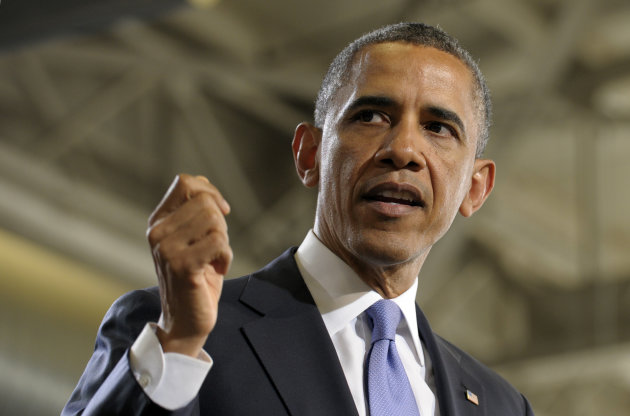 Veterans Today – by Stephen Lendman
Veterans Today – by Stephen LendmanMoney power in private hands games the system. It does so destructively. Controlling money, credit and debt for private enrichment assures speculation, booms, busts, inflation, deflation, instability, crisis, recessions and depressions.
The Cypriot crisis alone begs the question. Money power in public hands could have avoided what’s now happening. Ordinary Cypriots face horrific hard times. So do most people in Euroland countries and America.
Force-fed austerity is policy. Banks accounts no longer are safe. Nor are public pensions. Insiders get advance word and flee. From March 1 – 15, 132 companies with Cypriot deposits shifted hundreds of millions of euros offshore.
Less fortunate unsecured account holders may lose everything. Small depositors aren’t safe. They’re vulnerable. Grand theft is official policy.
Bailouts come with strings. They include strip-mining economies for profit. Massive job, wage and benefit cuts follow. So does selling off state enterprises at fire sale prices.
Ordinary people have no say. Their welfare doesn’t matter. Bottom line priorities take precedence. It’s Wall Street’s way. Global money control is policy.
It’s used to make more of it. It’s made the old fashioned way. It’s stolen. It’s done so with impunity. It wrecks countries in the process.
Cyprus is Exhibit A. It’s being looted. It’s being destroyed. It’s a perfect crime. Eurocrats and Cypriot officials bear full responsibility. Ordinary people face protracted hard times. Most have three choices – starve, rebel or leave.
On March 30, former Reagan budget director David Stockman headlined “State-Wrecked: The Corruption of Capitalism in America.”
Post-2007 crisis conditions devastated ordinary Americans. Main Street’s in protracted Depression. Stockman predicts more trouble ahead.
Fed policy resorted to money printing madness. Helicopter Ben dropped none of it on Main Street. It “stayed trapped in the canyons of Wall Street.” It’s “inflating yet another unsustainable bubble.”
Eventually they all burst. This time don’t expect bailouts. America’s heading for “zero-sum austerity and virulent political conflict.”
“This dyspeptic prospect results from the fact that we are now state-wrecked.”
Money printing madness and bailouts reflect “the single most shameful chapter in American financial history.”
“While the Fed fiddles, Congress burns. (Fiscal collapse) will play out incrementally, like a Greek/Cypriot tragedy, in carefully choreographed crises over debt ceilings, continuing resolutions and temporary budgetary patches.”
It’s not a pretty picture. Things head from bad to worse. “The future is bleak.” America reached its monetary and fiscal limits. Day of reckoning time approaches.
It’s arrive with tsunami force. It’s a far cry from Bernanke’s predicted prosperity. He falsely claimed the Fed tamed the business cycle. He did so before the subprime meltdown.
Instead of what he called the “great moderation,” the great “deformation” approaches. Rogue central bank policy and casino capitalism assure it.
They “brought America to an end-stage metastasis.” Responsible solutions aren’t forthcoming. Things head from bad to worse. America is fiscally, morally, intellectually, and politically broken.
Euroland’s no better. “When the latest bubble pops,” watch out. They’ll be “nothing to stop the collapse.”
Money power in private hands assures trouble. Ellen Brown explained more. Up to 40% of “everything we buy goes (for) interest.”
It goes to “bankers, financiers and bondholders.” A third or more of national wealth shifts from Main Street to Wall Street. Complicit politicians let it happen. They do so for generous benefits they derive. Greed is the national pastime. So is looting America for profit.
Most people think paying bills and credit card charges on time avoids interest charges. Not so. “Tradesmen, suppliers, wholesalers and retailers all along the chain of production rely on credit to pay their bills.”
Their costs pass on to consumers. Unwittingly they pay. We all do like it or not. Ordinary people make wealthy ones richer. They do so at their own expense. What better argument for public banking than that!
If interest paid returned to public hands, a third of more of the cost goods and services bought could be saved. Money earned could buy 50% more than now. Living standards would rise.
Ordinary people would benefit enormously. Poverty would drop. People would live better. They’d have more money to spend. Economic growth would follow. So would greater job creation. It gets better.
Borrowing from public banks eliminates the need to charge interest. It works at federal, state and local levels.
Public banks don’t have to earn profits. They’re not beholden to Wall Street or shareholders. They’re self-sustaining. They can lend for their own needs. They can do so for businesses, farmers and consumers.
The more loans roll over, the more debt-free money is created. If used productively for growth – not speculation, high salaries, big bonuses or other excesses – it can be inflation-free. As long as new money produces goods and services, price stability follows.
It happened before in America and elsewhere. It can again now. Imagine the possibilities. Federal, state and local debt could be substantially reduced or eliminated. So could personal and federal payroll taxes.
Social programs could be funded inflation-free. America’s manufacturing base could be rebuilt. Vitally needed infrastructure projects could be undertaken.
Alternative, sustainable, clean, safe, affordable energy sources could be developed. Environmental cleanup could be prioritized.
Millions of high-pay/good benefit jobs could be created. Homes would be more affordable. Foreclosures would end. So would out-of-control speculation, booms and busts.
Private savings, pensions, and investments would be secure. So would Social Security, Medicare and other vital social programs in perpetuity.
Surpluses would replace deficits. It could happen at federal, state and local levels. Sustained prosperity would be possible. It’s not pie in the sky. It happened before. Why not ahead.
Now’s the time to return money power to public hands. It’s where it belongs. Make banks a public utility. Doing so makes profits they earn public assets.
In 1919, North Dakota established public banking. It’s America’s only state with one. It’s 100% state owned. It works cooperatively with private banks. It’s been a credit machine for nearly 95 years. It created prosperity.
It freed North Dakota from 2008 crisis conditions. During their height nationwide, the state had its highest budget surplus in history. It added jobs. Other states cut them. It’s got the nation’s lowest unemployment rate.
If America and other states operated like North Dakota, prosperity would follow. What better time to do so than now.
Public banking isn’t radical. It’s a sensible solution that works. It’s sorely needed. It’s an idea whose time has come.
http://www.veteranstoday.com/2013/04/05/public-banking-what-better-time-than-now/
 Yahoo News – Associated Press
Yahoo News – Associated Press








